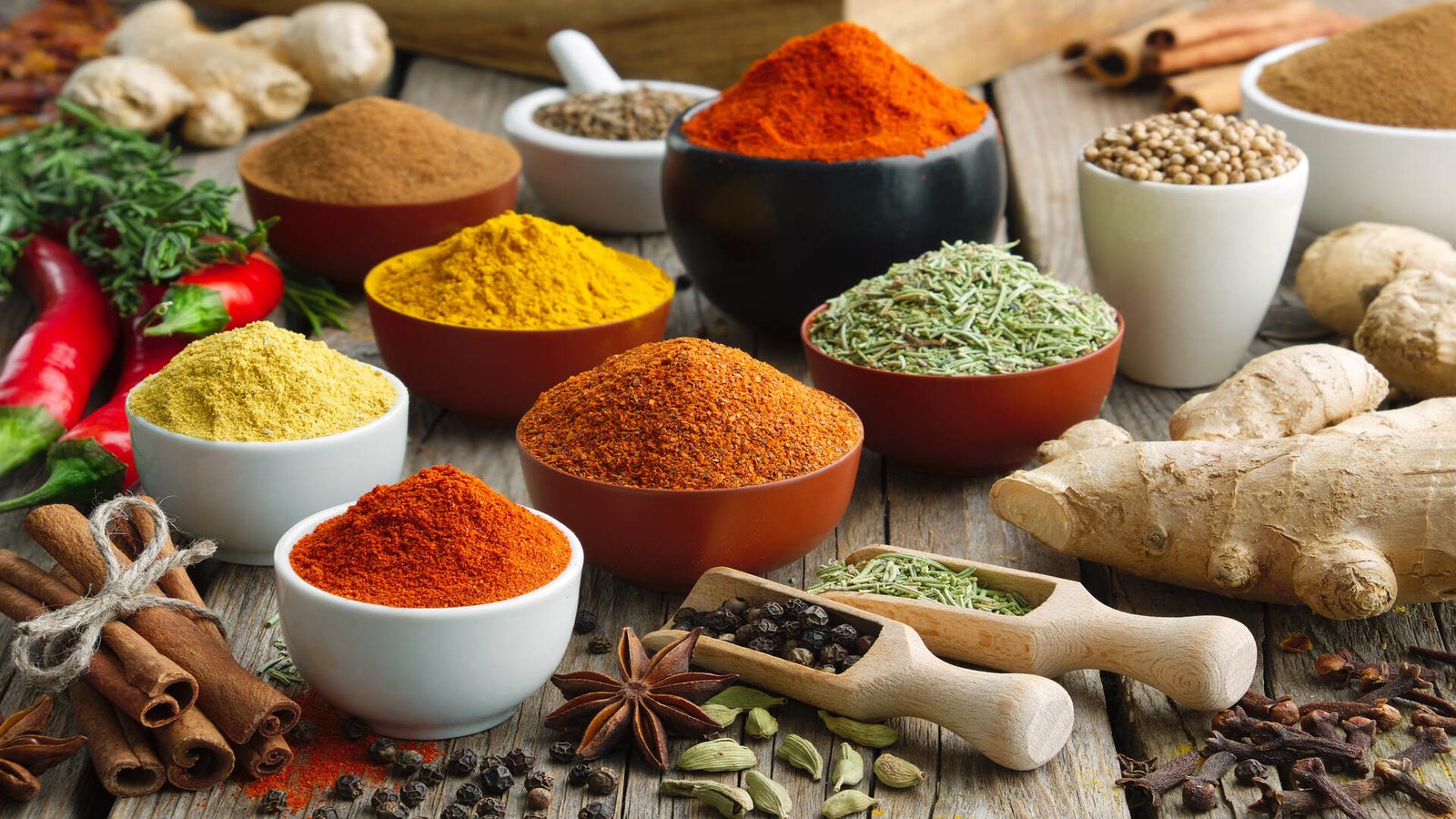
Indian spices
Description
Indian spices are an essential part of Indian cuisine, known for their rich flavors, aromas, and health benefits. Here's a short overview of some key Indian spices:
### 1. **Turmeric (Haldi)**
- **Uses**: Known for its vibrant yellow color and medicinal properties, turmeric has anti-inflammatory, antioxidant, and antibacterial benefits. It is widely used in curries and rice dishes.
### 2. **Cumin (Jeera)**
- **Uses**: Cumin adds a warm, earthy flavor to dishes. It aids digestion, reduces bloating, and boosts immunity. It is a key ingredient in spice blends like garam masala.
### 3. **Coriander (Dhania)**
- **Uses**: Both the seeds and fresh leaves (cilantro) are used. Coriander seeds have a citrusy, slightly sweet flavor, and the leaves are used to garnish dishes. It promotes digestion and helps in detoxification.
### 4. **Cardamom (Elaichi)**
- **Uses**: Known for its sweet, aromatic flavor, cardamom is used in desserts, teas, and savory dishes. It aids digestion, relieves nausea, and improves oral health.
### 5. **Mustard Seeds (Sarson)**
- **Uses**: These seeds are used in tempering (tadka) and in pickles. They add a pungent, sharp flavor and have antioxidant and anti-inflammatory properties.
### 6. **Cloves (Laung)**
- **Uses**: Cloves have a warm, sweet-spicy flavor and are used in curries, rice, and chai. They have analgesic, anti-inflammatory, and antimicrobial properties.
### 7. **Chili (Lal Mirch)**
- **Uses**: Red chili powder adds heat and spice to dishes. It stimulates metabolism, helps in digestion, and has antioxidant benefits.
### 8. **Fenugreek (Methi)**
- **Uses**: Both seeds and leaves are used in cooking. Fenugreek adds bitterness and depth to dishes and is known for its health benefits, including improving blood sugar levels and promoting digestion.
### 9. **Fennel Seeds (Saunf)**
- **Uses**: Fennel seeds have a sweet, licorice-like flavor and are often used in desserts, teas, or as a digestive aid. They also help in reducing bloating and improving digestion.
### 10. **Cinnamon (Dalchini)**
- **Uses**: Cinnamon has a sweet, warm flavor and is used in both sweet and savory dishes. It has anti-inflammatory properties and helps regulate blood sugar levels.
### 11. **Bay Leaves (Tej Patta)**
- **Uses**: Bay leaves add a subtle flavor to curries, rice, and stews. They aid digestion and have antimicrobial properties.
### 12. **Saffron (Kesar)**
- **Uses**: Known for its distinct color and flavor, saffron is used in rice dishes, desserts, and beverages. It has antioxidant properties and is believed to improve mood and skin health.
### 13. **Asafoetida (Hing)**
- **Uses**: Often used in tempering, hing has a pungent, garlicky flavor and aids digestion. It is commonly used in vegetarian dishes, especially in lentils.
### 14. **Tamarind (Imli)**
- **Uses**: Tamarind adds a tangy, sour flavor to chutneys, curries, and sauces. It is rich in vitamin C and aids in digestion.
### 15. **Nutmeg (Jaiphal)**
- **Uses**: Nutmeg has a warm, slightly sweet flavor and is used in both savory and sweet dishes. It is used in chai, desserts, and rice dishes and helps with sleep and digestion.
### Conclusion
Indian spices not only add depth and complexity to flavors but also offer various health benefits, including improving digestion, boosting immunity, and reducing inflammation. Their use in everyday cooking is an essential part of Indian culinary traditions and Ayurvedic practices.